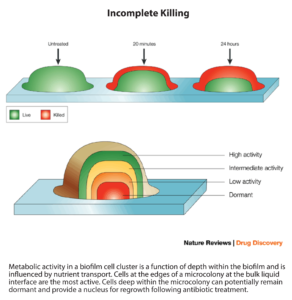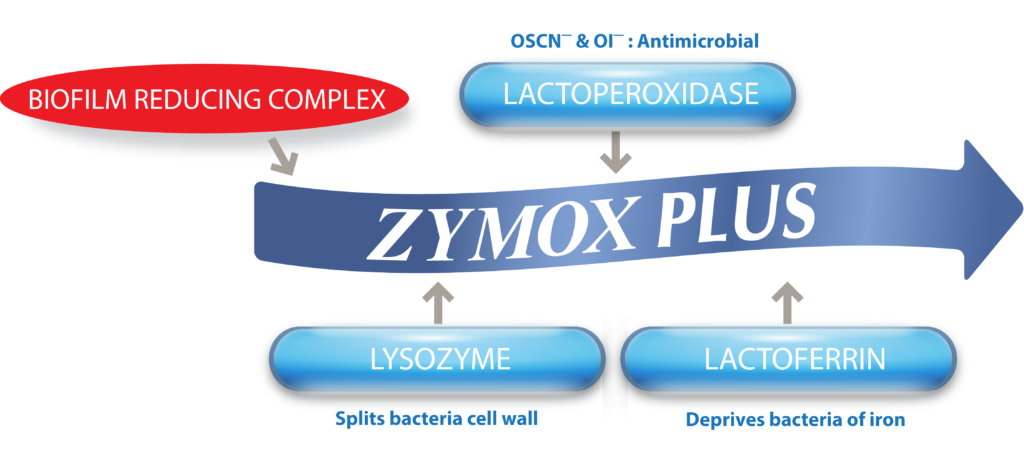Managing Bacterial Resistance with Antibiofilm Enzymes
According to the World Health Organization “antibiotic resistance occurs when bacteria change in response to the use of these antibiotics. Bacteria, not humans or animals, become antibiotic-resistant. These bacteria may infect humans and animals, and the infections they cause are harder to treat than those caused by non-resistant bacteria.” The bacteria’s ability to survive and multiply can occur naturally but the misuse or overuse of antibiotics in humans and animals are the main contributors. When an antibiotic fails, it often leads to use of an even stronger antibiotic. The bacteria’s ability to outsmart a medication is suspected to be the result of the production of biofilm. The Biofilm Reducing Complex in the Advanced Formula ZYMOX® PLUS Otic works to attack the complex biofilm structure, prevent adhesion, and metabolize its components.

What is Biofilm?
Biofilm is an ill-defined mix of polysaccharides, nucleic acids and proteins encased in a slimy matrix created by microorganisms to house the DNA of the infection. Biofilm is the suspected culprit for most antibiotic resistance and the reason many pet ear infections are persistent or return. Due to incomplete killing of cells, bacteria can remain hidden in a complex biofilm even after the infection appears to be resolved, patiently waiting for ideal conditions to multiply and re-infect. What’s more, biofilm-producing infections are 10x to 100x more resistant to the effects of antimicrobial agents.
Disruption of Biofilm with Biofilm Reducing Enzymes

The Advanced Formula ZYMOX PLUS Otic features the patented LP3 Enzyme System and the addition of the Biofilm Reducing Complex, which is comprised of four antibiofilm enzymes: mutanase, dextranase, cellulase and beta glucanase.
- Mutanase can exhibit diverse action patterns but fundamentally degrades β-1,3-glucan to glucose, making it water soluble.
- Dextranase is an enzyme which catalyzes the endohydrolysis of α-1,6 glucosidic linkages in dextran resulting in damage to the biofim.
- Cellulase is critical to an antibiofilm enzyme preparation as cellulose is found in most biofilms. Cellulase has been shown to significantly reduce biofilm formation of the pathogen Pseudomonas aeruginosa.
- Beta glucanase is another important antibiofilm component that provides powerful anticandidal biofilm activity by lysing the gulcans that are common in candida biofilms and compose up to 60% of fungal cell walls. Beta-glucan secreted by candida cells within biofilms significantly increases the organisms resistance to antifungals and enzymatic breakdown of the beta-glucan can make candida more susceptible to destruction.
Disruption of biofilm alone is unlikely to have a major impact unless the microbes within the biofilm are inhibited and destroyed. The Advanced Formula ZYMOX Plus Otic features the patented LP3 Enzyme System PLUS the Biofilm Reducing Complex. When combined the results are antibacterial, antifungal with effective biofilm removal.

